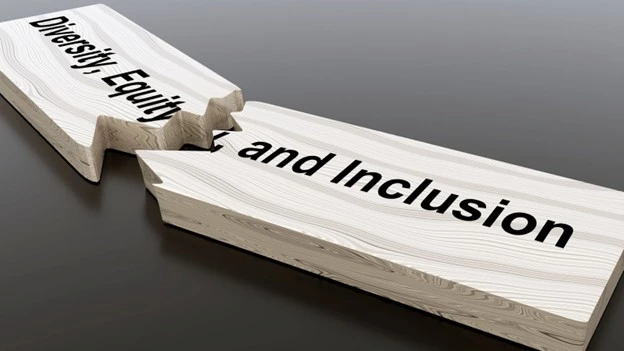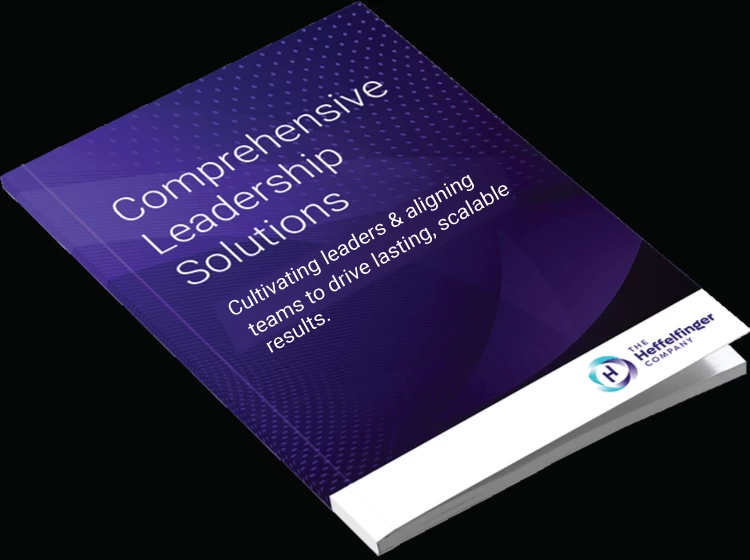“Diversity requires commitment. Achieving superior performance diversity can produce further action – most notably, a commitment to develop a culture of inclusion. People do not just need to be different; they need to be fully involved and feel their voices are heard.” –Alain Dehaze (CEO of Adecco)
On January 20th, the Trump administration issued executive orders that ushered in an era of backlash against Diversity and Inclusion (D&I) initiatives, which have provided women and minorities with greater access to jobs and educational opportunities in recent years. It was immediately apparent that large companies, especially those with federal contracts, felt pressure to rescind or scale back their D&I programs, which is exactly what many chose to do.
According to a new survey by resume.org of 1,000 companies with D&I programs in 2024, nearly half (49%) of companies that reduced or eliminated their D&I programs cited changes in the political climate as a key factor. Other significant factors were economic pressures (37%) and a lack of measurable return on investment (ROI) or impact (36%). Thirty-six percent of respondents claimed that D&I efforts were not well-received by employees, and 28% said that D&I no longer aligns with their business priorities.
In this blog, we explore how businesses are navigating the changing landscape and discuss the three primary options available to companies: stay the course, adjust, or back down; each with its own pros and cons. The decision ultimately comes down to each organization’s goals, market position, and stakeholder values.
How Businesses are Navigating a changing climate on D&I initiatives
Companies are facing critical decisions on how to navigate the political landscape in relation to their commitment to D&I efforts. While many companies have already made significant moves that made the news, the resume.org survey found that only 5% of companies with D&I programs in 2024 have fully eliminated D&I programs this year, while another 8% are reducing their budget. Among companies that do not plan to eliminate their D&I programs in 2025, 8% say they are very or somewhat likely to phase them out within the next four years. About 19% are uncertain about their plans.
Among companies that have reduced or eliminated their D&I programs this year:
- 51% have redirected funds to general operating expenses
- 40% are investing in AI or technology initiatives
- 28% have allocated funds to employee salaries or benefits
- 24% have shifted them to marketing
- 8% have invested in office space or facilities
With that said, a full 65% of respondents said they intend to keep their D&Ibudget the same, and 22% plan to increase funding, which suggests that the majority of businesses continue to view D&I strategies as essential to long-term success, even if it means standing strong against the political winds.
Consequences of the D&I Backlash
Organizations facing budget constraints often reallocate D&I resources to more profit-driven areas, especially when the return on investment for D&I can be difficult to quantify. While the measurable impact of D&I may not always be immediate or easily tracked, eliminating these programs can have long-term consequences for innovation, productivity, and ultimately growth.
Without intentional efforts to foster inclusion, workplace cultures may become less welcoming and psychologically safe, particularly for underrepresented employees. Forward-thinking businesses are finding ways to stay committed to D&I because they recognize that inclusive cultures ultimately strengthen engagement, innovation, and employee retention.
Three Approaches to Handling the D&I Backlash
Here are the three choices companies face in 2025 as they consider their approach to D&I programs:
1. Stay the Course
Choosing to stay the course on D&I initiatives means maintaining or even investing more in D&I initiatives in the face of external pressures and political risks. This approach entails continuing to promote D&I practices in hiring and training, as well as supporting D&I efforts in messaging, both publicly and internally.
Adverum Biotechnologies is proudly standing by their commitment to D&I. “We take pride in the inclusive culture we’ve built because it has resulted in a highly efficient and collaborative culture of INNOVATION that led to RESULTS! We have nurtured it over the years and that is why we are a TOP COMPANY to work for five years in a row. Our commitment to inclusion and diversity is at the heart of who we are, and we remain dedicated to growing a workplace where every team member feels empowered to bring their authentic self to work and contribute to our company’s mission. We believe that when people feel supported, safe and empowered, they’re more likely to share bold, creative—even contradictory—ideas. This kind of open dialogue is essential to innovation and vital to the research community and to ADVERUM as we are trying to CHANGE THE TREATMENT PARADIGM for the leading cause of vision loss in the U.S. We also celebrate the rich diversity of cultures and backgrounds that make up our team—reflecting the communities where we live and work.” - Dena House, Chief People Officer, Adverum Biotechnologies
2.Adjust
Adjusting your D&I strategy means shifting company focus from specific D&I programs and strategies (such as race-based training) to broader cultural efforts that support employee engagement and productivity. The goal is to thread the needle by preserving the spirit of inclusion, accessibility, and belonging while softening language and practices to minimize controversy or political risk. Both Costco and Bank of America have taken this approach.
3. Back down
Backing down from D&I initiatives means scaling back or completely eliminating D&I programs, particularly those that focus on race, gender, or identity-based initiatives. This approach may involve defunding programs, eliminating D&I hiring practices and training, and eliminating public messaging around diversity in favor of other business priorities. Netflix and McDonald’s have taken this approach, publicly backing off from their D&I initiatives.
Navigate Organizational Change with Less Stress
If your company is navigating organizational change in this political climate, we know it may feel overwhelming. At The Heffelfinger Company, we partner with business leaders to transform uncertainty into opportunity. Our expert team brings deep business leadership experience and proven strategies to help organizations manage change with clarity, confidence, and purpose. Whether you’re scaling growth, aligning teams, or building a high-trust culture, we’ll help you create lasting, measurable results.
Are you ready to turn disruption into momentum? Book your free 20-minute team alignment work audit today and discover how The Heffelfinger Company can support your organization’s next chapter.
Warmly,
Lori & James
Lori Heffelfinger & James Jackman
Source:
1 in 8 Companies Are Scaling Back DEI Commitments in 2025, Many Cite Political Climate. 1/21/2025. https://www.resume.org/research/1-in-8-companies-are-scaling-back-dei-commitments-in-2025-many-cite-political-climate/. Accessed 6/13/2025.







